×
[PR]上記の広告は3ヶ月以上新規記事投稿のないブログに表示されています。新しい記事を書く事で広告が消えます。
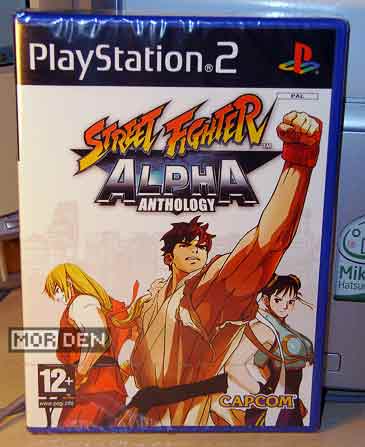
As you have probably already noticed, lately I've been buying alot of compilations of older titles and precious few fresh games. I still haven't bought Gears of War 2, Mad World, Resident Evil 5 and Street Fighter IV - I did buy a whole bunch of compilations though and the reason for that is simple: You get alot of games for your money and since they're arcade oldies, it's easy to play for a bit and move onto something else.
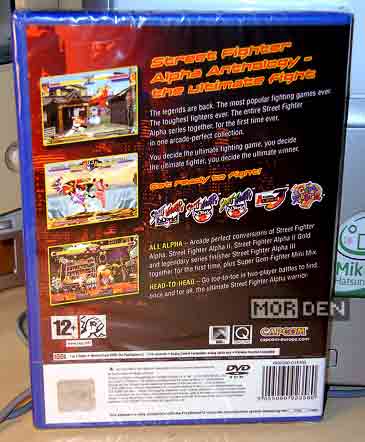
I've been planning on buying Street Fighter Alpha Anthology [or ストリートファイターZERO ファイターズ ジェネレーション in Japan] for a while. I do own all of these games, most of them for Sega Saturn, but I've been very pleased with the recent Capcom compilations, full of extras with perfect conversion quality, and I thought it would be convenient to have all these games on a single disc.
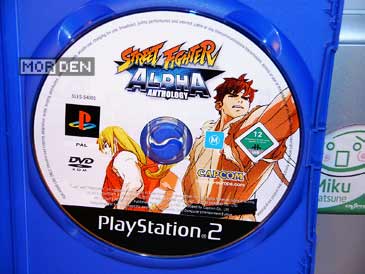
Street Fighter Alpha series had a slow start, with the first game not living up to expectations. It was, after all, a Capcom original, and those who were waiting for Street Fighter III to finally appear wanted something new, bigger and better. That wasn't exactly the case with the first Alpha game, but it sold well enough to spawn sequels, and that's where the fun begins.
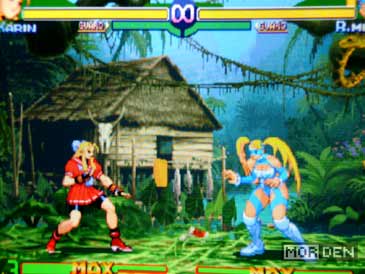
The series took off when Street Fighter Alpha 2 appeared on CPS-II. Improvement over the first title was noticable - Capcom had fine tuned the fighting system, added more characters, worked on the design and turned the ugly duckling that was Alpha, into a beautiful production that any fighting game fan would like to lay his hands on.
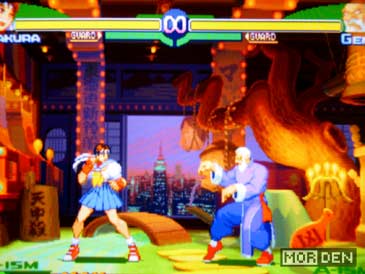
By the time Capcom released Alpha 2, it was clear that they had another strong franchise on their hands and so, everyone waited for the third game. Instead of getting Alpha 3, we finally saw Street Fighter III: New Generation, that was released on Capcom's brand new, state of the art arcade board, CPS-III. All eyes were on Capcom's new hardware and many of us were already imagining what could be acomplished with this new technology.
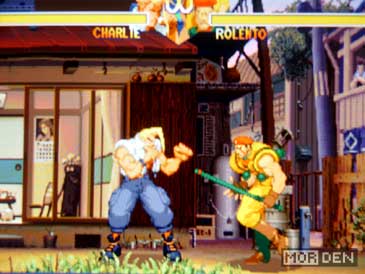
First two Street Fighter III games were a moderate success and so Capcom went back to their Alpha to develop a third installment. Instead of using the brand new CPS-III, the game was written for CPS-II. This was an unexpected move on Capcom's part, but they have managed to squeeze out every last drop of processing power contained in their now dated hardware.
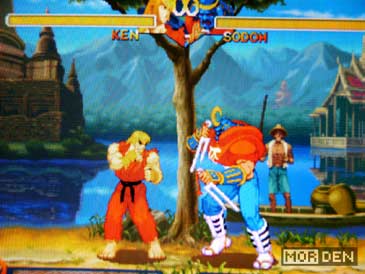
Street Fighter Alpha 3 was a huge success and it is safe to say that while first two games did ok, it was Alpha 3 that put the series on a pedestal. It turned out that Capcom needed three tries to make a promising game perfect. The exact same thing happend with Street Fighter III, where it was 3rd Strike that made all the difference.
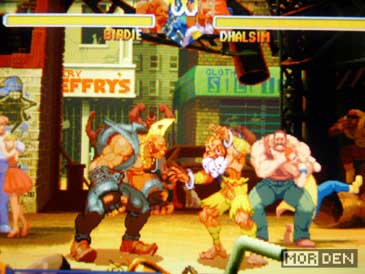
The story of Alpha series takes place before Street Fighter II, so it's a prequel. Some characters were brought in from the first Street Fighter game, some came all the way from Final Fight series. It worked. The minute I saw Alpha 2 at an arcade, I was hooked for good. The speed was there, the game looked sharp and the anime-esque art seemed so fresh, I couldn't help but throw in one coin after another into the machine.
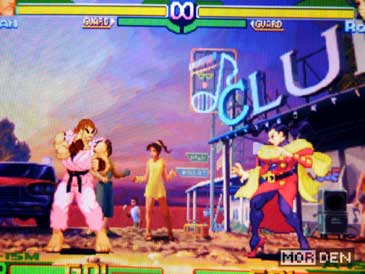
Obviously, I have alot of fond memories of the Alpha series, and as a seasoned player, what do I think of Capcom's compilation? I think they did pretty good. All the games are here, and you can even switch between different hardware revisions of each title. The only thing that bugs me is why the hell they call it Alpha and not Zero, like Japanese do?
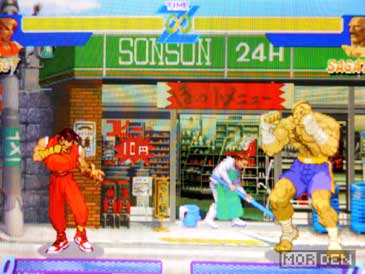
This is a minor issue, I know, but I always liked Zero better and I can never get used to the Alpha. Besides, it's only logical to call the series Zero, since it's a prequel, taking place even before the first game. Capcom always used numbers in the titles, and zero was a number, last time I checked, while alpha is not.
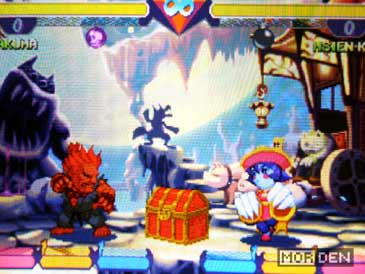
So, once we boot the disc, we can start Street Fighter Alpha, Alpha 2, Alpha 2 Gold, Alpha 3 and Super Gem Fighter, a CPS-II super deformed take on the Street Fighter series - really enjoyable too, with a potential for a good party game for people who don't really like beat 'em up's.
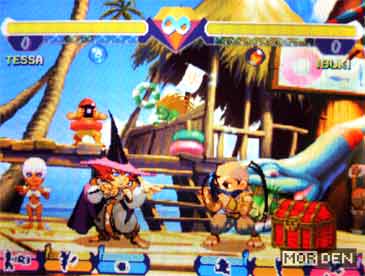
There are several other things that can be unlocked or uncovered, like Alpha 3 Upper, which can be accessed by pressing and holding the select button, while starting Alpha 3. This gives us the full character roster seen in console versions of Alpha 3. Sadly, World Tour mode didn't make it, but this compilation consists of arcade titles and World Tour was a console exclusive.
If you don't own the Alpha games, here's your chance to buy them all at once for a reasonable price. The PAL version supports 60Hz refresh rate and progressive scan, Alpha 3 Upper is unlockable, so if you're one of those who, except for the ISM's, likes to fight in Mazi mode, you're covered. I will complain about Super Puzzle Fighter not being included. This game belongs here and Capcom knows it. Also, I'm missing the professional feel of Capcom Classics Collection. I really would like to see separate artwork section for each game, a separate music player that shows BGM titles and things like that. Not to mention some nice video tutorials. Still, all in all Alpha Anthology is worth your money. Get it.
PR
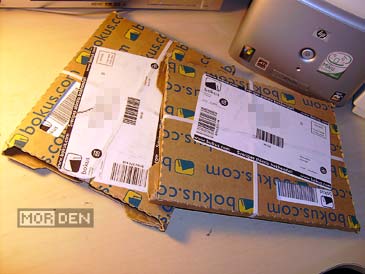
Two separate packages from one bookstore? Looks like someone couldn't be bothered to check that both orders were placed by the same customer on the same day. Oh well, as long as I got what I paid for, I'm happy.

I got two books this time, one of them being "Skissbok" [sketchbook] by Marcus Nyblom, and the other - seen on the pictures - "Jamen Förlåt Då" by Anneli Furmark. After tearing through Numret 73304-23-4153-6-96-8, I wanted something with actual text in it and that's where Anneli's work comes in.
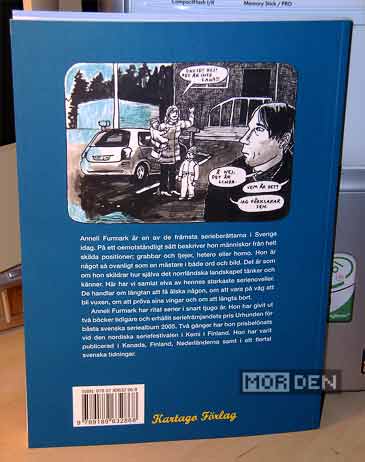
"Jamen Förlåt Då" is a Swedish title that could be loosely translated to "I'm sorry", but it's an "I'm sorry" with a dose of attitude, as if you were apologizing while being annoyed and telling someone to piss off at the same time. This book is a compilation of eleven stories both written and illustrated by Anneli Furmark. All of these slices of life are unrelated and you get a feeling that the person who wrote them probably isn't the most cheerful human being on this planet.
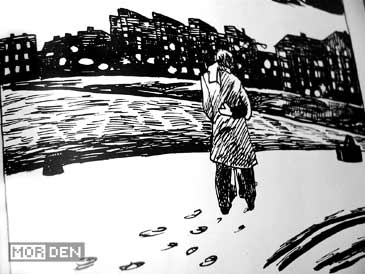
I'm a sucker for moody stories. They don't have to try to scare me but I like stories in which real life is reflected. Nothing is bright and colorful and there are no definite happy endings. Anneli's stories fit this description perfectly. Reading them is like peeking into someone's life to observe even the most trivial events. The book has a very personal feel to it, as if it was letting you in on a secret.

Anneli Furmark was born and grew up in Luleå, which is located in northern Sweden, in the Norrbotten [Northbottom in english] province. Her origin certainly comes through in all of the stories. It's usually cold and dark, and in some ways really calm. Northern parts of Sweden are not densly populated and they have that small, closed community feel to them - along with mostly undisturbed nature.

The art in "Jamen Förlåt Då" is something else. The book has a very distinct, European feel, and once you familiarize yourself with Anneli Furmark's style, it's impossible to mix up her works with anyone elses. The comic is mostly black and white, with only one story [Inland] using very limited colours. Anneli's drawings are a huge contrast to her paintings, which are usually very detailed and photorealistic.
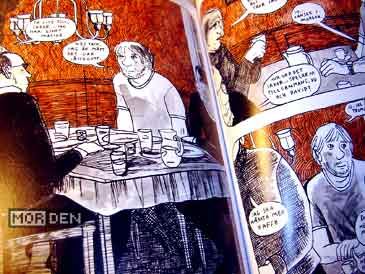
Unfortunately, as far as I know, "Jamen Förlåt Då" was published only in Sweden and it's not likely to be translated to english. It's not a book for every taste and there's absolutely no continuity between the stories, so options for marketing of this title are extremely limited. It's a shame if you ask me. I've grown tired of generic superhero comics and even more generic manga, and reading comics like this one is pure pleasure to me.
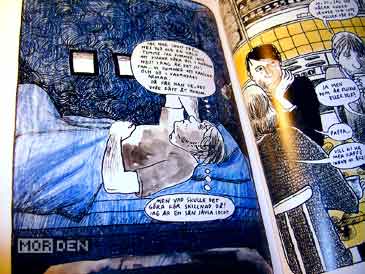
This book reminds me alot of an underground Japanese manga magazine, Garo [ガロ]. The magazine went bankrupt in 2002, but the years I spent reading it introduced many remarkable artists to me - all of which I valued for their moody stories. It's been ages since I felt this moody sadness while reading a comic book and for that reason I love "Jamen Förlåt Då".
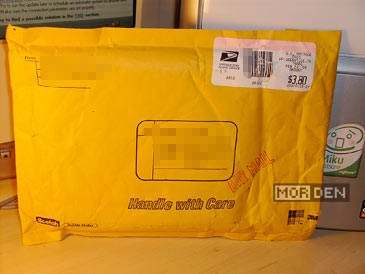
Again, a package from Cryptic Allusion arrives, containing a yet another prize. If you didn't know this, let me tell you - Cryptic Allusion contests are probably the easiest contests on this planet. You can win stuff just by following simple instructions, like sending a PM to CA staff at their boards. So again, I recieve a prize and this time it's Space Invaders Revolution for Nintendo DS.
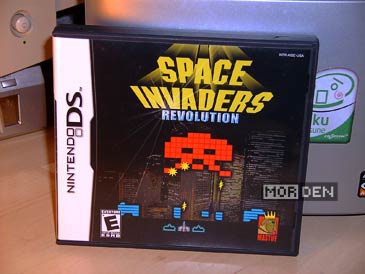
If you can think of a more iconic title than Space Invaders, representing the whole videogame industry, please drop me a comment and tell me what that title is. And no, Pong does not count, because a paddle is not an instantly recognizable game character and aliens from Space Invaders are.
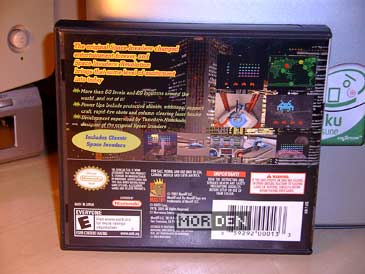
Let me think for a second - how many different Space Invaders variations have I played? Too many to be bothered with remembering, that's for sure. Last time I played Space Invaders was when I got both volumes of Taito Legends and I was rather pleased with the relatively fresh looking Space Invaders '95. How does Space Invaders Revolution look and play, then?
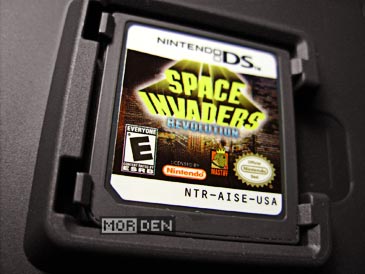
I'm going to be brief, because there isn't much to talk about here. The word "revolution" in the title might just indicate that you're up for a wild ride through new ideas applied to the old Taito formula. Sadly, people responsible for this port were probably after some quick cash and nothing more. This so called revolution is nothing more than regular Space Invaders plus some slight variations in weapons department.
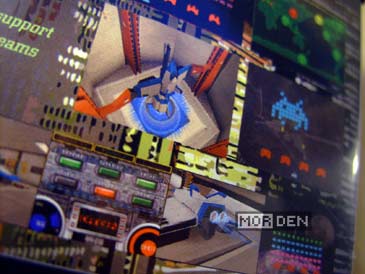
This is rather disappointing. Space Invaders were around since 1978 and that's all the developers could come up with in their Revolution? Except for the regular version of the game you can play a slightly altered one but the changes are almost purely cosmetic. Some polygonal cutscenes were added and they feel completly detached from the rest, to say the least. You're better off picking up the amazing Space Invaders Extreme by Square - This game will show you that there's still plenty of things that can be done with this classic title.
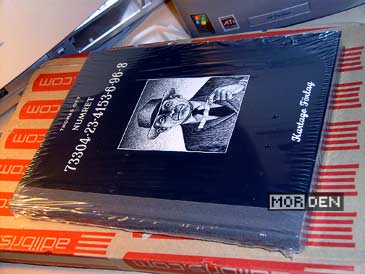
It's certainly been awhile since I last talked about comics, but this is to change. Right ... about ... now. I went on a small shopping spree and bought a few new books, one of which I will talk a little bit about in this entry. I'll probably talk about the others aswell, as soon as they arrive. For the time being, Thomas Ott and his fantastic work entitled The Number 73304-23-4153-6-96-8 are here and I'm completly under their spell.
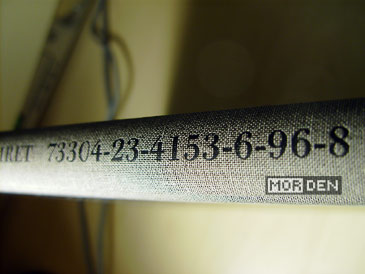
First of all, the edition I bought was published in Sweden by Kartago Publishing House, thus the small title change [Numret 73304-23-4153-6-96-8]. A bit of important information here - no matter what country you'll buy this book from, Ott's graphic novel does not contain a single speech bubble. It is rather like a silent noir movie and it does work better than you'd expect it to.
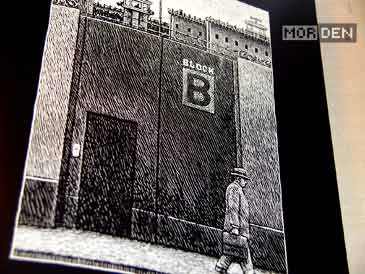
Before I'll tell you about the story, let me emphasize one thing: the book looks amazing. It's a hardcover edition that has a really solid feel to it. Paper quality is great aswell, which is extremely important in this case. Being a black and white publication, properly saturated black is of highest importance and the publishers really did a great job. This is how Thomas Ott wants his books to look like, and no matter where you buy them, they're always hardcovers.
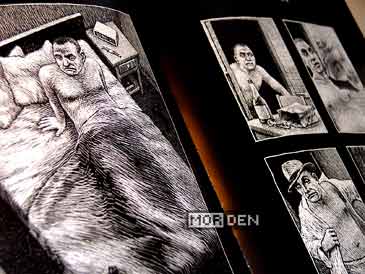
The story starts with an execution. A prison guard, after tending to the electic chair controls, finds a piece of paper with a number sequence written on it. The numbers, as you might have guessed already, are 73304-23-4153-6-96-8. He puts the piece of paper in his pocket and doesn't think too much about it. Shortly afer however, the numbers start to display their significance, affecting their bearers life and ultimately his choices.
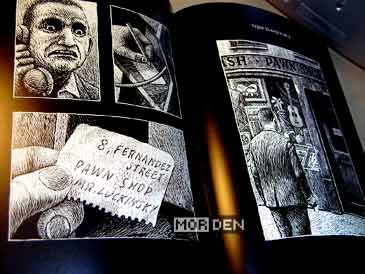
I don't want to spoil the story, so if you want to know what happens, you'll have to buy the book, and I assure you, it's worth the purchase. Thomas Ott has created a really moody story that can be easily compared with best episodes of The Twilight Zone or Tales from the Crypt. The Number 73304-23-4153-6-96-8 is what you could call a classic horror story. It's not overworked and relatively simple, yet it manages to appeal to your senses.
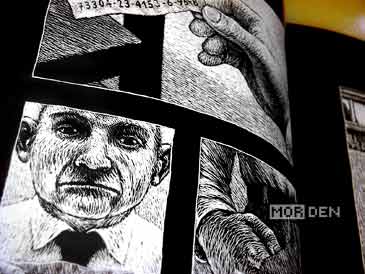
The artwork is absolutely superb. The images look as if Thomas Ott used line engraving print technique, where it's the white lines that appear to be dominant. This creates an illusion as if white ink was used on black paper and not the other way around. Each page is a marvel to behold and I can promise you, the tiny pictures you see here do the art absolutely no justice.
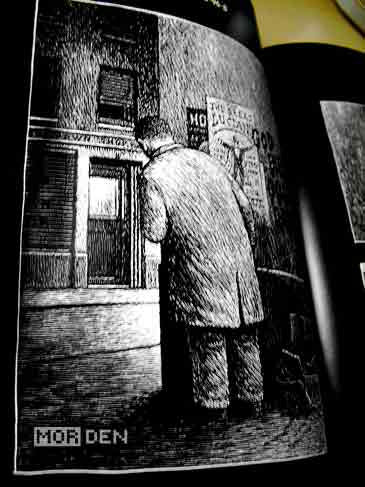
US comic book market is mostly dominated by superhero comics, along with Japanese manga, which still remains quite popular, especially when a particularly hyped series get published [like One Piece or Naruto, more recently]. Japan and the rest of asia have their own thing and they stick to it - All that is just simply wrong. If you really like comics, take your time and pick what's best from each one of those worlds. When it comes to European comics, and horror stories in particular, I suggest you give Thomas Ott a try.
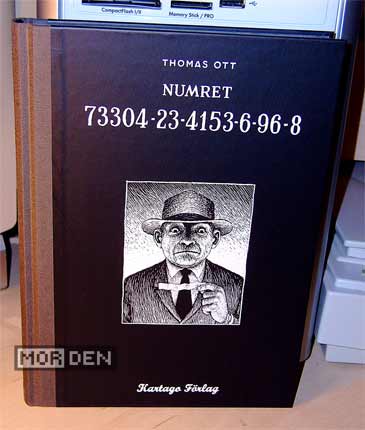
The Number 73304-23-4153-6-96-8 is an easy book to find, so I won't even link to any stores. You can find it on Amazon, and if you live in Europe, chances are someone in your country has already published it. Like I said, it doesn't matter where you get this, because there is no written dialogue. Look around for a cheap offer and get yourself a present - most likely the best graphic novel you'll buy this year.

In other comicbook related news, I bought the tickets to Watchmen, which premieres on March, Friday 13th. I have already voiced my concerns and soon enough, we'll find out if this movie is any good. I also talked to the movie theater folks and asked them to leave one poster aside for me. Let's hope they'll come through.
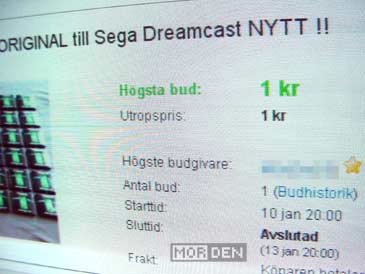
I have scored some nice deals in my life, but this one is certainly among the sweetest. While browsing through a local auction service a while back, I've noticed one seller who was basically giving away tons of hardware and software. I looked through his list and diceded to go with Dreamcast peripherals.

The guy had some positive feedback so I figured "why not?". I bid 1 [yes, ONE] Swedish krona [that's 0,11 US Dollars] on a set of 48 US Dreamcast memory cards and wouldn't you know it, I've won. The guy really took his time before I got the goods but today I picked up a 5.8 kilogram box full of Visual Memory Units.
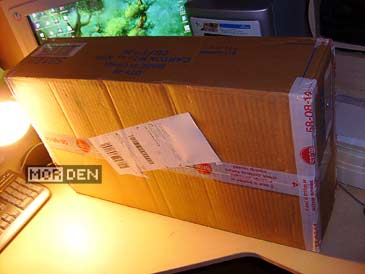
I knew the seller wouldn't try to screw me out of money since he sent me an invoice, so I wired the money after I've opened the box. After all, aside from the 0,11 dollars for the cards, I had to pay 27 dollars for the shipping. With a deal like this it's kind of hard to believe that everything is ok. I thought that maybe they were cheap knocko-ffs or maybe they were damaged. Everything was ok though. Memory cards are original US Sega hardware, all in skeleton green cases.
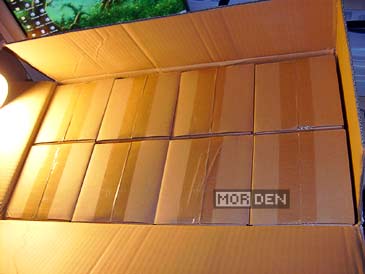
The package contained eight boxes, six cards in each one of them. All packed by the manufacturer, brand new, never before opened. Having 48 VMUs, now I can rest assured that I will never run out of memory. And if I do, I can always use the Dream Explorer tool on each and every one of the cards to release those 41 unused blocks.

All the excitement aside, I have to say one thing. Sega really had it going on with Dreamcast. The console rocked. It was ahead of its time, it was the first 128-bit system, it was the first home platform to make proper use of the internet [not counting Saturn NetLink and Genesis X-Band modems], it used custom discs, double the size of CDs and it got the VMU, probably the most innovative memory device seen to this day.
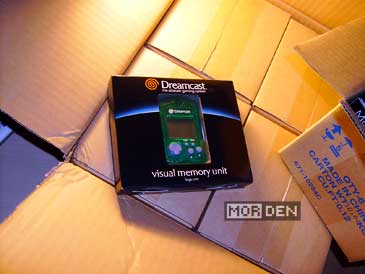
For those who aren't really sure what Dreamcast VMU really is, it's a memory card. But it doesn't end here. Except for being a portable storage device, you can play games on it. Simple as they might be, they're still games. There were many Dreamcast titles that used VMUs extensively, Sonic Adventure being a particularly good example.
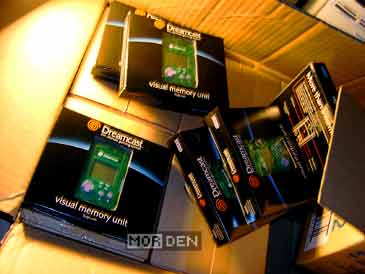
In Sonic Adventure you could catch a Chao creature and transfer it onto your VMU. From there you could train it, feed it and so on, much like a Tamagotchi. It grew stronger and faster and you could later transfer it back into the game and participate in races, etc. Sounds like fun, right? It sure was.

The VMU also served as a status display in many Dreamcast games. When plugged into the controller, it would show various things depending on a game. Some would display a static logo, some would show animation, but there were also those games that would show you useful information, like Resident Evil: Code Veronica. The game would show you your health in a form of the standard EKG readout.
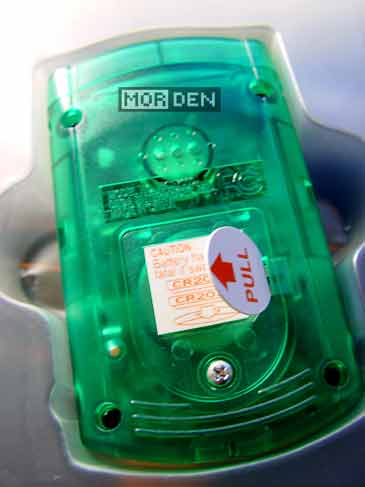
Another cool feature was the ability to connect two VMU units with each other. The connector was designed so that two memory cards could be connected with each other directly. By doing this, you could swap save files with someone or even play a two player game.
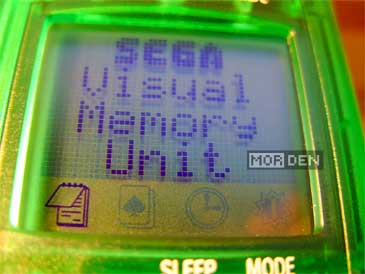
It seems like the idea of mini game devices serving as memory cards was appealing enough for Sony, so a year after Sega they released their own hardware, calling it PocketStation. We all knew it was a VMU ripoff though and it enjoyed an even shorter life than Dreamcast. Ok, that's enough for today. I'm off to do some heavy saving and I'll be back to post about Quaker Wars.
カレンダー
| 11 | 2025/12 | 01 |
| S | M | T | W | T | F | S |
|---|---|---|---|---|---|---|
| 1 | 2 | 3 | 4 | 5 | 6 | |
| 7 | 8 | 9 | 10 | 11 | 12 | 13 |
| 14 | 15 | 16 | 17 | 18 | 19 | 20 |
| 21 | 22 | 23 | 24 | 25 | 26 | 27 |
| 28 | 29 | 30 | 31 |
カテゴリー
フリーエリア
最新CM
[02/23 jikoo]
[02/23 jikoo]
[02/21 sara]
[01/04 Inlagd]
[11/21 Inlagd]
最新記事
(01/31)
(01/27)
(01/04)
(11/14)
(11/12)
最新TB
プロフィール
HN:
No Name Ninja
性別:
非公開
ブログ内検索
最古記事
(12/17)
(12/19)
(12/23)
(12/25)
(03/30)
P R


